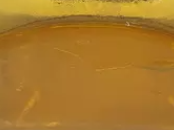PEG-20 castor oil is a chemical compound, a PEG (polyethylene glycol) derivative that has been obtained by a process of etherification and esterification from castor oil.
Il nome definisce la struttura della molecola
- "PEG" stands for "Polyethylene Glycol". It is a series of synthetic polymers based on ethylene oxide. They are used to make a compound more soluble in water or to improve its ability to penetrate the skin.
- "20". Indicates the degree of polymerization of the PEG, i.e., the number of ethylene oxide units in the polymer.
- "Castor Oil". It's a vegetable oil obtained from the seeds of the castor plant. It's known for its emollient properties and is often used in cosmetic products.
Description and function of raw materials used in production
- Ethylene oxide - A key raw material used in the production of polyethers like PPG.
- Butyl alcohol - The ethylene oxide will react with this alcohol to form the desired compound.
The industrial synthesis process takes place in different steps:
- Preparation - Butyl alcohol is purified and readied for the reaction.
- Polymerization - Ethylene oxide is made to react with butyl alcohol in the presence of a catalyst. This process is carried out in a reactor under specific temperature and pressure conditions.
- Neutralization - If an acid catalyst is used, the final product might require neutralization.
- Purification - The compound is purified from impurities and by-products through processes like distillation.
- Quality Control - The final product undergoes various quality checks to ensure it meets specifications.
Synthetically, it appears in the form of white flakes or an oily transparent liquid. Flammable. Incompatible with strong oxidising agents. Odourless, insoluble in water. Or with a peculiar smell.


Since the PEG (Polyethylene glycol) family is very numerous and can be found in cosmetic, industrial, pharmaceutical, medical and other products, it is necessary to make an introductory statement on the subject, which is rather complex from a safety point of view because these products not only come into contact with the skin, but, as in the case of medical products, are ingested.
PEGs (polyethylene glycol) polymerise condensed ethylene oxide and water and are referred to as polyethylene glycols, but in reality they are complex chemical components, polymers bonded together. For example, plastic is polyethylene and has a hard consistency, while polyethylene combined with glycol forms a liquid. PEGylation is produced not only as etherification, but also as transesterification, which is the transformation of an alcohol by an ester. The number appearing after the abbreviation PEG refers to mol of ethylene oxide and the higher this number is, the less it can penetrate the skin.
Safety.
The term 'eth' refers to the ethoxylation reaction with ethylene oxide after which residues of ethylene oxide and 1,4-dioxane, chemical compounds considered carcinogenic, may remain. The degree of safety therefore depends on the degree of purity of the compound obtained. No manufacturer appears to provide this information on the label, at least as of the date of this review.
What it is used for and where
Cosmetics
Skin conditioning agent - Miscellaneous. This ingredient has the task of modifying the condition of the skin when it is damaged or dry by reducing its flakiness and restoring its elasticity.
Surfactant - Emulsifying agent. Emulsions are thermodynamically unstable. Emulsifiers have the property to reduce the oil/water or water/oil interfacial tension, improve emulsion stability and also directly influence the stability, sensory properties and surface tension of sunscreens by modulating their filmometric performance.
Emulsion stabilizer. Emulsions are thermodynamically unstable. Emulsion stabilisers improve the formation and stability of single and double emulsions. It should be noted that in the structure-function relationship, molar mass plays an important role.
CAS: 61791-12-6 generic
![]() PEG-20 castor oil
PEG-20 castor oil 


